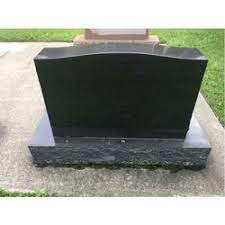The process of manufacturing marble and granite monuments consists of a series of steps that can range from the initial design process to the final product. During the manufacturing process, the design is usually created on a computer and then transferred to a rubber stencil. The stencil is then cut out using a cutting machine or X-Acto knife. Once cut, the monument is taken into a blasting room where fine particles of abrasive are blasted against the granite.

Historically, monuments were flat slabs of stone and had no internal support. This made them more expensive and difficult to install and, consequently, they had to be erected higher. After the Civil War, however, monuments began to grow in size and weight and the cost of making them fell. As a result, many monument companies began to buy pre-made monuments from manufacturers near the quarries. But this method was not without its drawbacks. заказать памятник
Today, monuments made of marble or granite are available at a number of factories across the country. These companies specialize in manufacturing monuments, cremation markers, and memorial products. Some of these companies also provide value-added services for monument dealers. One of these companies, Rome Monument, is based in Monaca, Pennsylvania, north of Pittsburgh. In addition to manufacturing monuments, Rome Monument also offers monument installation services to cemeteries and other retailers. They’re one of the leading names in cemetery monument manufacturing and installation.
The production of monuments from marble and granite starts in early New England when slate was widely available. But as time passed, marble and granite were popular and widespread. But as marble eroded, granite was the material of choice. Today, granite is the primary raw material for modern memorials. This stone is made from slowly cooling magma and is unearthed by erosion of the soil and shifts in the earth’s crust.
The marble and granite monuments industry was in full swing in the nineteenth century, with stone quarried in Vermont and large-scale cutting. During this time, granite was increasingly used on obelisks and simple headstones. Granite headstones were also commonly combined with other types of stone, such as marble or carved marble. The process of carving granite monuments began in the 1870s. The process was patented by John Henry Ford in 1871, and it was used in West Rutland, Vermont.
After a granite monument has been cut, it is cleaned and stenciled before being packaged for shipping to the local monument retailer. Then it’s time to deliver the monuments to the home. In the end, monuments made from marble and granite are beautiful and last for centuries. When manufacturing marble and granite monuments, it’s worth the cost. You can’t go wrong! The quality and durability of these materials are unmatched in the industry.
The process of manufacturing marble and granite monuments is complex and requires skilled craftsmanship and the ability to work with large slabs of marble and granite. There are many different steps in the process. Granite is more durable than marble and other materials, so it will last for generations. Granite is the most preferred stone for memorials. There is no other material that will stand up to the elements as well. Granite monuments are more durable than sandstone or marble.